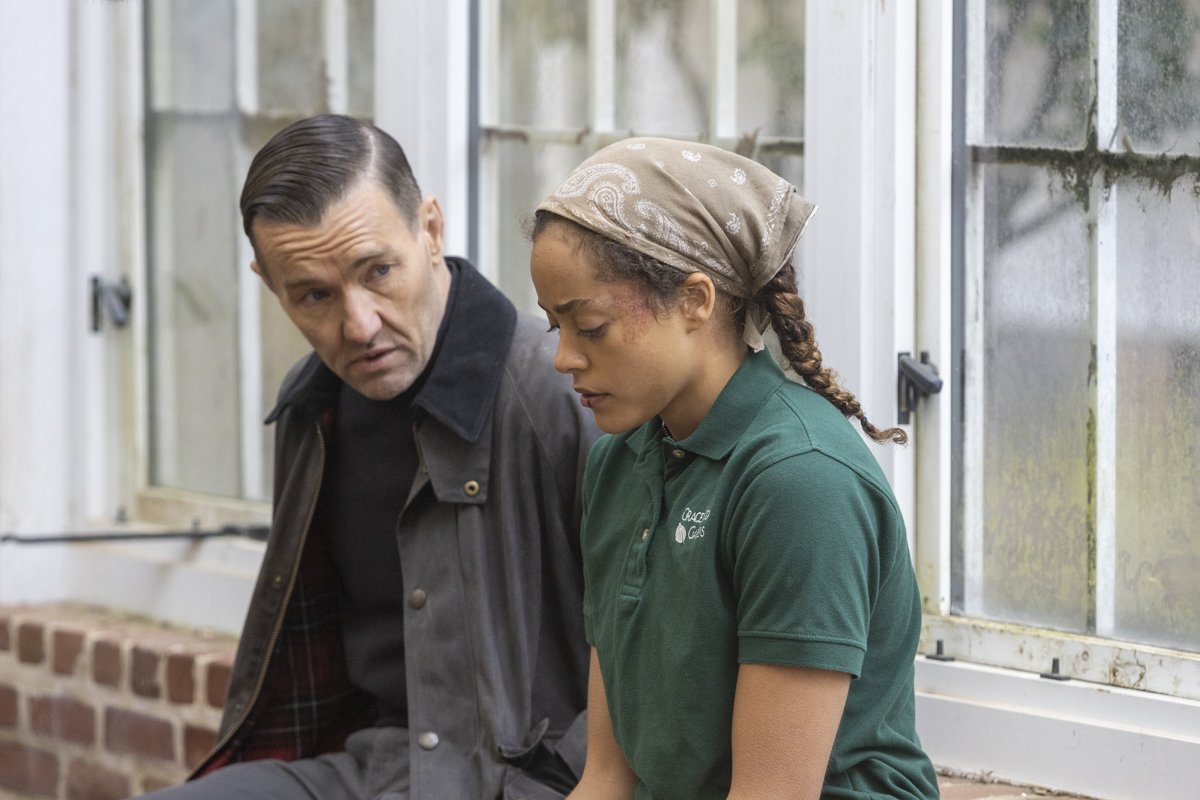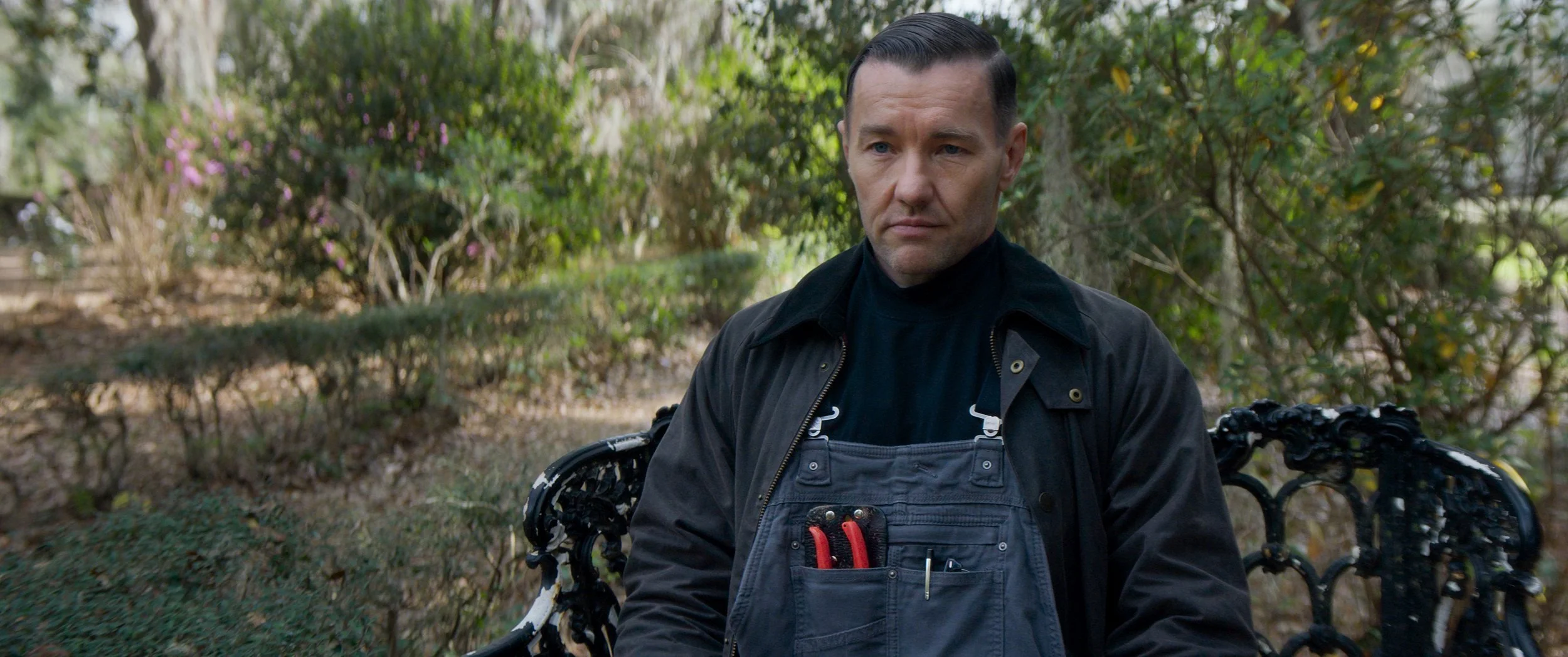Striking, Hopeful, and Naive: Paul Schrader's Master Gardner
This review contains spoilers.
Paul Schrader’s Master Gardener begins with his protagonist, Narvel Roth (Joel Edgerton), writing in his journal, “to garden is to have a belief in the future.” It is with these lines that we meet Narvel, a former neo-nazi anxious to move away from the sins of his past and find atonement. While the moral universe of Schrader’s film offers his character this opportunity, it remains unclear if Schrader’s spiritual project is able to transcend the flesh and blood world of contemporary America.
The characters of Master Gardener live within and express themselves through the act of gardening and its associated metaphors. The garden is a stage upon which the drama of life, rebirth, reformation, and renewal come to be enacted. Where we see the tangled dramatic ecologies of our characters' romances, desires, and hidden pasts come to interact and form the soil from which a story emerges. Edgerton’s Narvel Roth is our typical Schrader-esque man with a past. Head horticulturist at the Gracewood Gardens estate, he runs his small staff of young adults and teenagers with a solemn and solitary professionalism. Every bit of his being is absorbed by his work as he tends to the grounds and sees to the whims of wealthy benefactor, Mrs. Haverhill (Sigourny Weaver). We gain insight into the two’s relationship when she asks him to take on her grand-niece Maya (Quintessa Swindell) as an apprentice. The young woman, we are informed, has lost her way, one parent passed another absent, with a job as a gardener perhaps offering her structure. We are also told that Maya is, as Mrs. Haverhill puts it, of “mixed blood.”
When the pair meet there is the requisite awkwardness, Narvel bluntly asking if she has any interest in a career in gardening with Maya offering a disinterested and coy shrug. She is there to fulfill an obligation, but she takes well to the work around the garden. A short time passes and we watch her and Narvel become close, a fact not unnoticed by Mrs. Haverhill whose relationship with Narvel frequently escalates to physical intimacy. We come to learn more about Narvel in dreams and flashbacks, his history with a white-nationalist paramilitary group, the racist tattoos which cover his torso, and the events which bring him into witness protection and grant him his life at Gracewood. We also learn more about Maya’s life outside the garden when she comes to work one day injured at the hands of her abusive, drug-dealer boyfriend. Narvel comes to her aid, promising to protect her and advocating for her to stay at the garden where she is safe.
While Schrader grants us access to parts of Narvel’s inner world, he remains oblique and mysterious, with the viewer being asked to assume much about the character's motivation. This pill can be a hard one to swallow at times. What are we to make of Narvel as a reformed racist extremist? His attitude towards Maya is one of congeniality and friendship, he cares for her and exhibits an obvious liking for her. Yet as they grow closer we see very little friction in this pairing. Narvel’s past and present selves seem to be severed from one another de facto in their beliefs and actions. He and Maya’s relationship is given to the audience as a fact and not the product of a man fighting to change himself.
Maya’s character also comes across as underdeveloped; she at times plays the rebellious, drug-addicted youth, alongside her roles as the lost girl looking for a home and the forgiving lover. As Maya’s relationship with Narvel deepens and tensions rise between her time at the garden and her life outside, Mrs. Haverhill believes she sees something deeper bloom between the two and finds her suspicions enough grounds to exile them from Gracewood. The two stake out on their own with Narvel finding it impossible to both protect Maya from her other life and for him to keep his past hidden.
Schrader’s plotting of the film’s second half faces a similar issue to his characterization with the audience asked to accept stakes that are massive and yet have very little weight given to them. Eventually Maya sees Narvel’s tattoos, and comes to understand the truth of a man she has placed her trust in. She is naturally angry, betrayed, and hurt. It is uncomfortable and controversial material, to put it lightly, which requires a deft hand to land gracefully. Yet, Schrader’s parable of forgiveness sidesteps the deeper struggle and drama of these moments, leaving his scenes of improbable transcendence feeling hollow.
For fans of Schrader this all might seem to be familiar territory. Master Gardener continues along the familiar visual, thematic, and stylistic pathways struck out by his previous two films, First Reformed and The Card Counter. A protagonist struggling to come to grips with their compliance in atrocities of American violence, be it their proximity to the bagmen of environmental collapse or time spent torturing prisoners at Abu Ghraib, who through enactments of righteous violence and the discovery of transcendent love attempt to free themselves from their cycles of guilt and acquiescence. As a kind of thematic denouement to this unofficial trilogy of films and as a larger spiritual statement, Master Gardener attempts nothing short of a miracle. To call Schrader’s film naive in its hopefulness is, perhaps, too jaded and unfair. Nonetheless, his meticulously laid soil produces a politically charged work which he can’t seem to bring to fruition. Master Gardener is a striking and hopeful picture from one of American cinema’s most spiritually convicted and necessary filmmakers. However the film can’t help but suffer from a lack of attention given to its characters as human beings living in contemporary America, such an attention which made Schrader’s previous works in this vein so vital and relevant.


